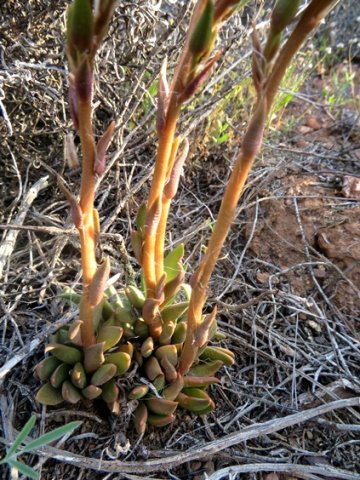Anacampseros

Author: Ivan Lätti
Photographer: Thabo Maphisa
Anacampseros is a genus of leafy succulent perennials and undershrubs in the Anacampserotaceae family, previously Portulacaceae. The sparingly branched plants often grow from a tuberous rootstock. The soft, fleshy roots are thick, the stems short and fleshy.
The simple leaves are alternate, sometimes arranged in rosettes and tightly stacked. The leaves are succulent with entire margins, the surfaces smooth or dotted with papillae. When there are stipules, they are wiry, bristly or thread-like.
The inflorescences grow on erect peduncles from stem-tips, the flowers in clusters of two or more. Reduced, bract-like leaves may occur on the scapes.
The sessile flowers are bisexual, opening only for a few hours in bright sunlight. The two sepals drop off soon. The five, short-lived petals are red, pink or white, emerging from below the (superior) ovary. The numerous stamens are attached to the petal bases. Their filaments are usually white, the anthers yellow. The sessile ovary has one locule, the ovules attached to a central, free placenta. The style is three-branched.
The fruit is a three-valved capsule, or falsely six-valved. The seeds are compressed or angled and sometimes three-winged.
There are 14 species, all found in arid parts of southern Africa. They often grow under shrubs and tend to flower shortly after thunderstorms.
The plant in picture is Anacampseros telephiastrum (Leistner, (Ed.), 2000; Vlok and Schutte-Vlok, 2015).

